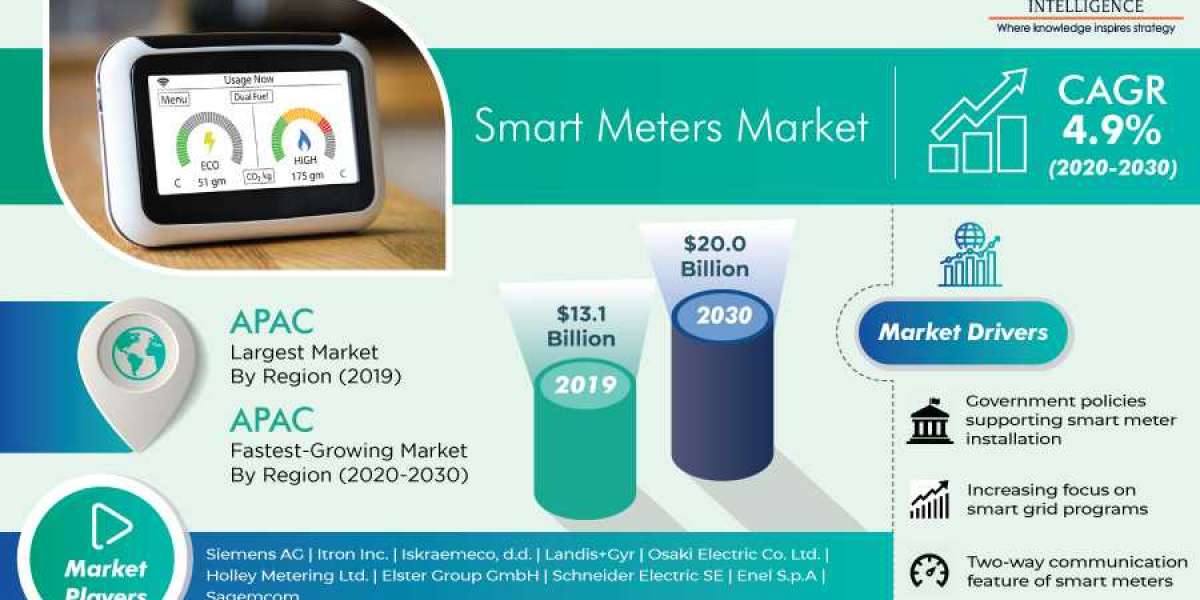According to P&S Intelligence, the APAC smart meters market will generate the highest revenue and demonstrate the fastest growth during the forecast period.
The utilities can send commands, information, or other signals to the meter installed at the end user’s premises and even remotely connect or disconnect the resource supply. This feature will help the smart meters market grow at a CAGR of 4.9% during the forecast period (2020–2030). Additionally, a surging number of government policies supporting their installation will help their sales value grow from $13.1 billion in 2019 to $20.0 billion in 2030.
For example, in February 2020, the government of India completed the installation of 1 million of these under its Smart Meter National Programme. In the recent past, electricity meters were installed in the highest numbers due to the soaring support of government and global bodies for their installation for energy conservation, fraud detection, and peak consumption knowledge.
Apart from these, governments are encouraging the adoption of such measuring devices for accurate billing. All such smart meters are based on either the automatic meter reading (AMR) or the advanced metering infrastructure (AMI) technology. At present, smart meter manufacturers are investing heavily in research and development (RD), engaging in mergers and acquisitions, and focusing on product development to cater to a wider clientele.
For example, in September 2019, Landis+Gyr entered into a partnership with GeoPal Solutions to expand its product portfolio for smart metering field operations. Landis+Gyr achieved this by combining its AMI deployment and operations experience with a digital platform hosted by GeoPal Solutions and an Android mobile application. According to PS Intelligence, the
APAC smart meters market will generate the highest revenue and demonstrate the fastest growth during the forecast period.
This can be credited to the mounting investments by governments in deploying smart meters and rolling out nationwide implementation programs. For example, the Ubiquitous Power Internet of Things program was unveiled by the State Grid Corporation of China (SGCC) in October 2019 to modernize its power grid by incorporating artificial intelligence (AI) and 5G technologies.
Therefore, the two-way communication feature of smart meters and government policies aimed at resource conservation will augment their deployment in the upcoming years.









